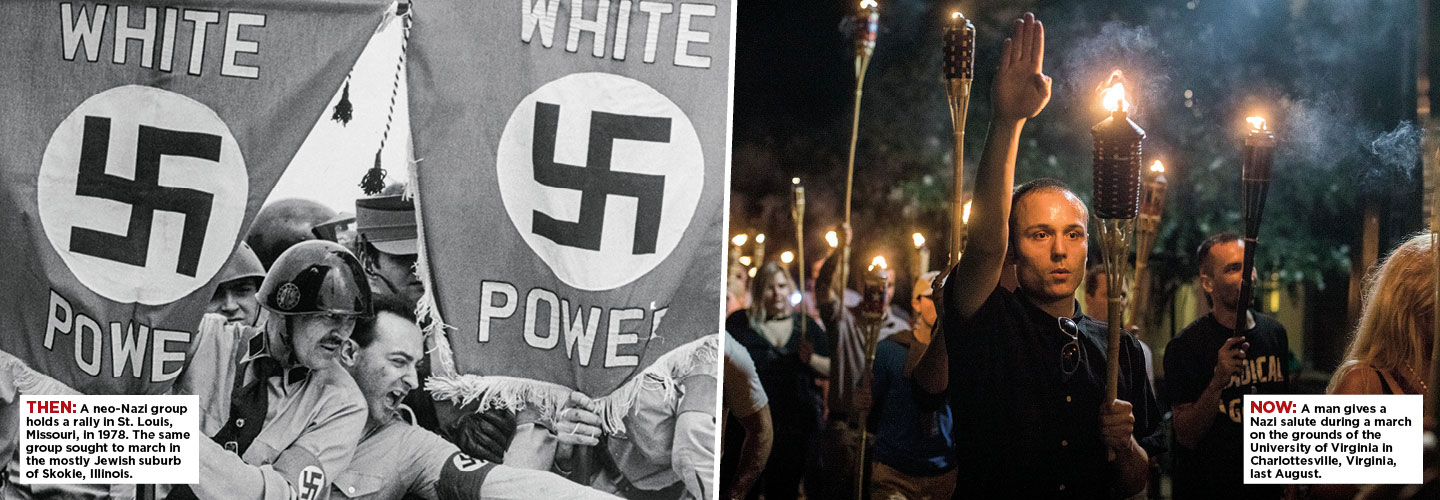After surviving unspeakable horrors at nine different concentration camps during the Holocaust, Ben Stern, a Jewish man from Poland, never thought he’d have to face
In 1946, after World War II (1939-1945), he and his wife emigrated from Europe to the United States to start new lives. They settled in Skokie, Illinois, a suburb of Chicago, and spent the next 30 years raising a family.
But Stern’s life was upended in 1977. To his shock, the Nazis were back—specifically, the National Socialist Party of America (NSPA), a small group of American neo-Nazis. They planned to hold a rally—complete with Nazi uniforms and swastikas—in the mostly Jewish suburb.
The town of Skokie issued an order prohibiting the demonstration. But the neo-Nazis found an unlikely ally in the American Civil Liberties Union (A.C.L.U.), a legal rights group that took their case. The dispute reached the U.S. Supreme Court, which helped clear the way for a lower court to rule that the neo-Nazis had a right to march under the First Amendment, which protects freedom of speech.

